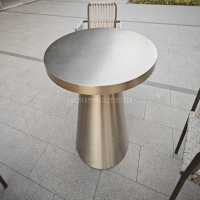Welcome to the website for landscape facilities products and knowledge.
How does the table’s design account for resistance to damage from tree sap?
Modern outdoor table designs incorporate multiple strategic elements to resist damage from tree sap, which contains natural resins and acids that can degrade surfaces over time. Manufacturers employ specially formulated protective finishes that create molecular barriers against sap penetration. Powder-coated aluminum frames and synthetic wicker materials provide inherent resistance to sap's corrosive properties, while tempered glass tops offer non-porous surfaces that prevent sap absorption.
The engineering extends to material selection where high-density polyethylene (HDPE) and marine-grade polymer compositions demonstrate exceptional sap resistance through their tightly bonded molecular structures. Advanced manufacturing techniques include UV-stabilized coatings that simultaneously protect against sap and sunlight degradation. Many premium outdoor tables feature specialized sealants in their joinery systems that prevent sap accumulation in crevices and seams.
Design considerations also include sloped surfaces and rounded edges that encourage sap runoff rather than pooling. The integration of quick-release mechanisms in table designs facilitates regular cleaning, further minimizing sap exposure duration. Through these comprehensive approaches, contemporary outdoor furniture maintains structural integrity and aesthetic appeal despite constant exposure to tree sap and other environmental challenges.
Related search:

Recommendation
Outdoor Metal Table - Classic Outdoor Furniture, Stainless Steel Table, Durable and Reliable